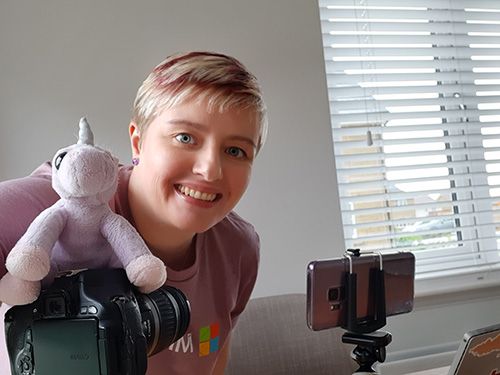Vlogging Update
I've been vlogging since August 2019, in this update I share my thoughts and equipment.

Back in August 2019 I jumped into the vlogging arena. I tentative enter the arena, not knowing if the content I had in mind would be well received, not knowing if I had interesting content or the right story to tell. Right now, as I approach close to year of creating content, I'm taking time to reflect and understand what's been successful, what hasn't worked and looking at the kit that I use and how I've adapted and progressed.
Kit
When I started in August 2019, I didn't want to go all out and spend a fortune to realise I didn't enjoy creating video content or that it wasn't well received so I looked around to see what I at home that could work. I started off with the Samsung Galaxy S9 as my camera, I bought a Boya BY-M1 lavalier microphone wired lavalier microphone to give me better quality audio. And picked up a small tripod cheaply from eBay to help me.
If you look back at the stuff I created back then, the quality is viewable, and the audio is actually not to bad. I hadn't learnt how to focus on the camera on my phone instead of staring at the screen, which is something I have learnt how to do and is one of the biggest tips I can give anyone starting out with video content. Look at the camera lens, not the screen. 😀
Technique
Last year there were a few things that I did to create my videos. For my weekly vlog, the process was fairly straight forward, I filmed using my phone and recorded that audio at the same time with the lavalier microphone. So I just took that footage and audio,and uploaded it to my YouTube account and released the footage. I did very little if any post editing if any at all to it.
I also started to create some screencast videos, and that took a bit more work to create and edit after the fact. What I did was the following:
- Film a intro and ending using my phone and microphone
- Record the screen work using something like Camtasia
- Play the screencast back and then record the commentary on my phone as a video with my lavalier microphone
- Sync the screencast and audio together
- Put all the footage and audio together then upload to YouTube
It took a lot of work, a lot of time afterwards and I didn't always get it right, so I have some screencasts which are half finished or scrapped.
Present Day Kit
The kit that I have has slightly changed, I still make use of my Samsung Galaxy S9 and Boya BY-M1 lavalier microphone. But I've upgraded my phone to a Samsung S20 5G which I now use and I also make use of my Logitech C920 desktop webcam, a Rode NT USB microphone and some Neewer 480 LED Video Lights.
I mix and match depending on where I am and what I am filming, there are times when I run two cameras at once and switch up angles to make it more interesting for the viewer.
I've also got some accoustic panels that I made in my home office, which I hope improves the audio quality in the room.
Present Day Technique
For my weekly vlogs, I've taken to recording the video on my Logitech C920 using the Camera app built into Windows 10 and Audacity records the audio from my Rode NT USB microphone, and then using Adobe Premiere Pro I edit the two together and add in my opening scene, end sceens and lower thirds that Ratworks made for me.
When I'm doing screencasts, I do everything on my PC. Again using the Camera app to record video from my web cam, audio via Audacity and then Camtasia for recording the screen. Then I piece it all together within Adobe Premiere Pro again.
Thoughts
Overall my workflow might take a while but I've got into a rhythm now and I think it produces some good content. 😉